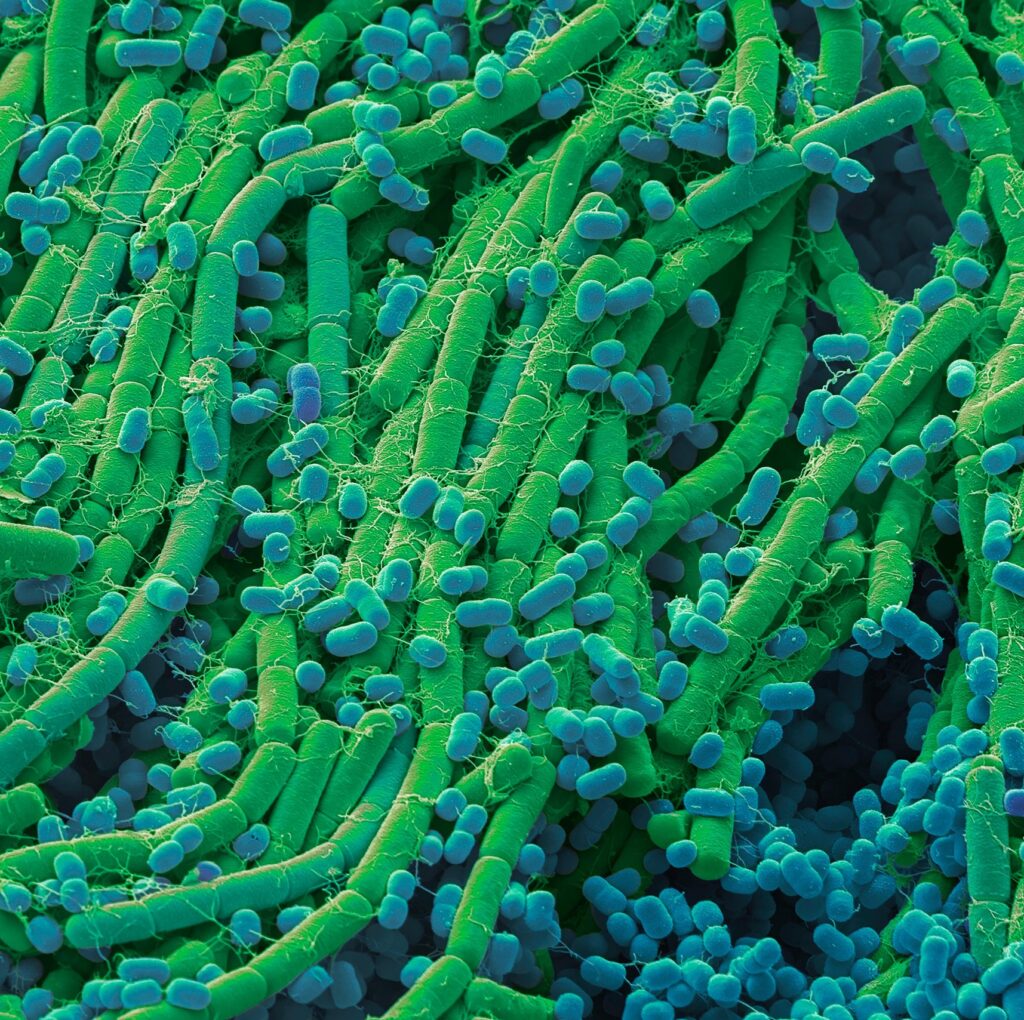When most people think about healthy crops, they think of sunlight, water, fertiliser. But beneath our feet is an entire universe we rarely consider – the microbial world of soil.
A handful of healthy soil contains more microorganisms than the entire human population of Earth. We’re talking about billions of bacteria, fungi, and other microbes – plus tens of thousands of species, each playing a vital role in keeping soil (and plants) alive.
They form the foundation of the underground economy of plant life. And just like in any economy, these microbes trade in nutrients.

Microbes and Nutrient Exchange: A Symbiotic Relationship
Plants release sugars and other compounds from their roots (called root exudates) to attract and feed beneficial microbes. In return, microbes help unlock nutrients in the soil that plants can’t access on their own.
Here’s what they do:
- Nitrogen-fixing bacteria (like Rhizobium) convert atmospheric nitrogen into forms like ammonium that plants can absorb.
- Mycorrhizal fungi form vast networks that help transport water and nutrients like phosphorus, zinc, and copper to plant roots.
- Other bacteria break down organic matter and release potassium, iron, manganese, and sulphur into plant-available forms.
Meanwhile, fungal networks (mycelium) create an underground highway, transporting water, carbon, and minerals from one plant to another, and strengthening soil structure to prevent erosion.
In short, microbes are nature’s fertiliser factories and delivery agents – working constantly to keep soil alive and plants thriving.
The Microbial Crisis: How We’re Destroying The Soil Beneath Us
But this delicate network is under threat. Modern farming practices – excessive tilling, overuse of chemical fertilisers, and widespread pesticide use – are destroying microbial communities. Each time we clear land without replenishing its biology, we weaken the soil’s ability to regenerate.
And when the microbes die, plants struggle to absorb nutrients – no matter how much fertiliser you apply. The more we damage soil biodiversity, the more fertiliser and chemicals we need – creating a vicious cycle of diminishing returns.
The scale of the crisis is staggering:
- The United Nations Food and Agriculture Organization (FAO) reports that 33% of the Earth’s soils are already degraded, with projections suggesting that over 90% could become degraded by 2050.
- According to FAO data, the equivalent of one soccer pitch of soil is eroded every five seconds, adding up to around 10.4 million hectares annually.
- Zambia has lost about 15% of its arable land in just the last decade due to soil degradation (Source: United Nations (IPCC) Special Report on Climate Change and Land – 2020 policy brief).
The Solutions Are Proven
Thankfully, there are science-backed practices that restore microbial life and bring soil back to health:
- No-till (or minimal-till) farming – Instead of disturbing the soil with heavy machinery, farmers plant directly into undisturbed ground. This protects microbial communities, particularly fungi and bacteria that form underground nutrient networks.
- Cover cropping – Growing certain plants (like legumes or clover) during off-seasons to protect soil. These crops shield the surface from harsh weather, feed microbes through their roots, and naturally add nutrients like nitrogen to the soil.
- Composting – Turning food scraps, leaves, and manure into nutrient-rich soil amendments. Microbes drive this entire process, breaking down complex organic matter into humus – a stable, carbon-rich material that supports soil life.
These methods also increase humic substances – natural compounds formed as microbes decompose organic matter. Humic substances act like sponges, improving soil structure, water retention, and nutrient availability.
The Takeaway
Soil isn’t just a medium for planting – it’s a living system. And at its heart is an invisible workforce of microbes working around the clock to feed our crops.
If we want healthy crops, strong yields, and sustainable farming for the future, we must stop treating soil like dirt – and start treating it like life. Because once the microbes are gone, the soil collapses – and everything above it soon follows.
It’s time to stop feeding just the plants – and start feeding the soil. That’s where real life begins.
Written by Rex Chatyoka
Founder & CEO | Fusion Labs.
